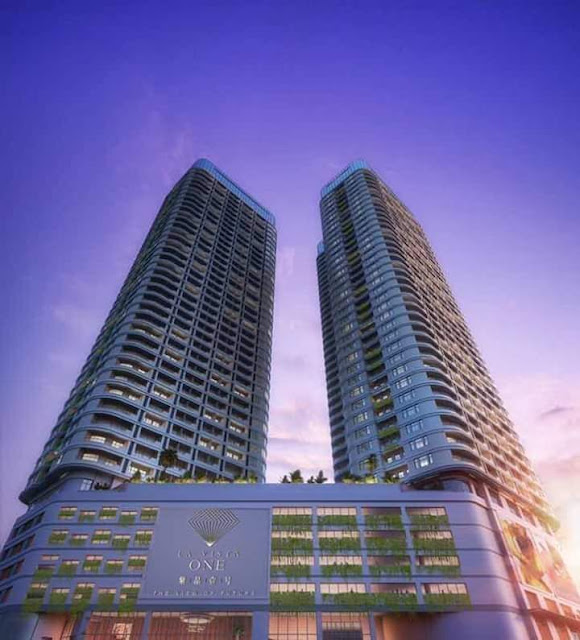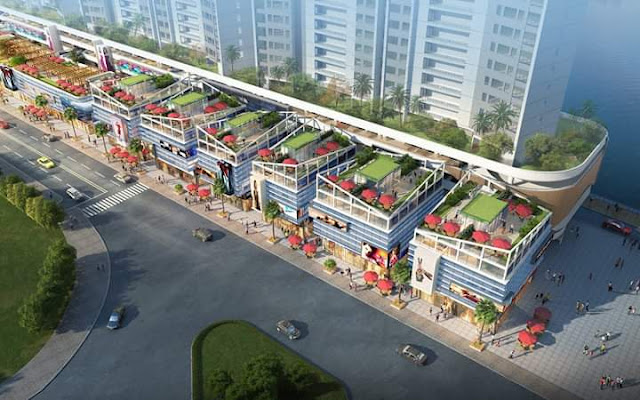Phnom Penh 4 Hari 3 Malam Trips Group (9px)
Phnom Penh
Wat Phnom Historical Site
Toul Sleng Genocide's Museum
It is a shopping mall located in the center of Phnom Penh along with the Olympic Stadium The mall is not far from City Mall, Olympic Market ... And there are glass bridges for entertainment, strange emotions, shocking, restricted to the elderly, the infirm, etc. More Options ...
Phnom Penh
Once known as the "Pearl of Asia," it was considered one of the loveliest French-built cities in Indochina in the 1920s. Phnom Penh, along with Siem Reap and Sihanoukville, are significant global and domestic tourist destinations for Cambodia. Founded in 1372, the city is noted for its historical architecture and attractions. It became the national capital in 1434 following the fall of Angkor, and remained so until 1497.....
Wat Phnom (Khmer"Mountain Pagoda") is a Buddhist temple (wat) located in Phnom Penh, Cambodia. It was built in 1372, and stands 27 metres (88.5 ft) above the ground. It is the tallest religious structure in the city. The pagoda was given the name of Wat Preah Chedey Borapaut. Wat Phnom is the central point of Phnom Penh.
Geographic coordinates
11°34′34″N 104°55′23″E
Architecture
Founder
Lady Penh
Completed
1373
History
Legend relates that a wealthy widow called Penh (commonly referred to as Daun Penh, Grandmother Penh, in Khmer) found a large koki tree in the river. Inside the tree she found four bronze statues of the Buddha. Penh constructed a small shrine on an artificial hill made by the people living in the village to protect the sacred statues. Eventually this became a sacred site and sanctuary where people would make blessings and pray. More Options...
Geographic coordinates
11°34′34″N 104°55′23″E
Architecture
Founder
Lady Penh
Completed
1373
Legend relates that a wealthy widow called Penh (commonly referred to as Daun Penh, Grandmother Penh, in Khmer) found a large koki tree in the river. Inside the tree she found four bronze statues of the Buddha. Penh constructed a small shrine on an artificial hill made by the people living in the village to protect the sacred statues. Eventually this became a sacred site and sanctuary where people would make blessings and pray. More Options...
Killings Field Genocide Center
Choeung Ek.
The Cambodian Killing Fields Khmer pronunciation: are a number of sites in Cambodia where collectively more than a million people were killed and buried by the Khmer Rouge regime (the Communist Party of Kampuchea) during its rule of the country from 1975 to 1979, immediately after the end of the Cambodian Civil War (1970–1975). The mass killings are widely regarded as part of a broad state-sponsored genocide (the Cambodian genocide).
The Cambodian Killing Fields Khmer pronunciation: are a number of sites in Cambodia where collectively more than a million people were killed and buried by the Khmer Rouge regime (the Communist Party of Kampuchea) during its rule of the country from 1975 to 1979, immediately after the end of the Cambodian Civil War (1970–1975). The mass killings are widely regarded as part of a broad state-sponsored genocide (the Cambodian genocide).
Analysis of 20,000 mass grave sites by the DC-Cam Mapping Program and Yale University indicates at least 1,386,734 victims of execution. Estimates of the total deaths resulting from Khmer Rouge policies, including death from disease and starvation, range from 1.7 to 2.5 million out of a 1975 population of roughly 8 million. In 1979, Vietnam invaded Democratic Kampuchea and toppled the Khmer Rouge regime; viewed as ending the genocide.
The Cambodian journalist Dith Pran coined the term "killing fields" after his escape from the regime.
"
Ben Kiernan estimates that about 1.7 million people were killed. Researcher Craig Etcheson of the Documentation Center of Cambodia suggests that the death toll was between 2 .... More Options ...
....XX...
The Tuol Sleng Genocide Museum (Khmer:) is a museum in Phnom Penh, the capital of Cambodia, chronicling the Cambodian genocide. The site is a former secondary school which was used as Security Prison 21 (S-21) by the Khmer Rouge regime from its rise to power in 1975 to its fall in 1979. From 1976 to 1979, an estimated 20,000 people ...
In 1979, the prison was uncovered by the invading Vietnamese army. In 1979/80, the prison was reopened by the government of the People's Republic of Kampuchea as a historical museum memorializing the actions of the Khmer Rouge regime. More Options...
Mekong River Cruises Sunset
Overview Experience the Mekong River at a spectacular time, with this sunset cruise. Witness the picturesque sights of the river as you float past local villages, fisherman and Buddhist pagodas. You may even choose to enjoy a drink onboard. Disembark at Phnom Penh night market, where you can enjoy live music and stroll among local vendors selling groceries, crafts, clothing and more. Enjoy hotel pick up and travel in a tuk tuk to the riverfront This two hour evening tour is easy to fit into your schedule Finishes at Phnom Penh night market, where you’re free to continue exploring Family friendly tour, with discounts for children and no charge for infants
What To Expect Discover.
...XX...
Royal Palace & Silver Pagoda
The establishment of the Royal Palace in Phnom Penh in 1866 is a comparatively recent event in the history of the Khmer and Cambodia. The seat of Khmer power in the region rested in or near Angkor north of the Great Tonle Sap Lake from 802 AD until the early 15th century. After the Khmer court moved from Angkor in the 15th century after destroyed by Siam, it first settled in Phnom Penh which back then named as Krong Chatomok Serei Mongkol in 1434 (or 1446) and stayed for some decades, but by 1494 had moved on to Basan, and later Longvek and then Oudong. The capital did not return to Phnom Penh until the 19th century and there is no record or remnants of any Royal Palace in Phnom Penh prior to the 19th century. In 1813, King Ang Chan (1796–1834) constructed Banteay Kev (the 'Crystal Citadel') on the site of the current Royal Palace and stayed there very briefly before moving to Oudong. Banteay Kev was burned in 1834 when the retreating Siamese army razed Phnom Penh. It was not until after the implementation of the French Protectorate in Cambodia in 1863 that the capital was moved from Oudong to Phnom Penh, and the current Royal Palace was founded and constructed.
...XX...
National Museum Phnom Penh
The National
The National Museum of Cambodia is located on Street 13 in central Phnom Penh, to the north of the Royal Palace and on the west side of Veal Preah Man square. The visitors' entrance to the compound is at the corner of Streets 13 and 178. The Royal University of Fine Arts is located on the west side of the museum. The museum is under the authority of the Cambodian Ministry of Culture and Fine Arts. The museum buildings, inspired by Khmer temple architecture, were constructed between 1917 and 1924, the museum was officially inaugurated in 1920, and it was renovated in 1968.
Central Market Phnom PenhThe National Museum of Cambodia is located on Street 13 in central Phnom Penh, to the north of the Royal Palace and on the west side of Veal Preah Man square. The visitors' entrance to the compound is at the corner of Streets 13 and 178. The Royal University of Fine Arts is located on the west side of the museum. The museum is under the authority of the Cambodian Ministry of Culture and Fine Arts. The museum buildings, inspired by Khmer temple architecture, were constructed between 1917 and 1924, the museum was officially inaugurated in 1920, and it was renovated in 1968.
Central
The Central Market (Khmer: ផ្សារធំថ្មី, "Phsar Thom Thmey", "New Grand Market", French: Marché central de Phnom Penh) is an Art Deco landmark of Phnom Penh, the capital of Cambodia. The bight yellow building completed in 1937 has a 26m high central dome, with four tall arch-roofed arms branching out diagonally across the block, creating vast hallways housing countless stalls and all kinds of goods. Initially designed by city architect Jean Desbois, construction works were supervised by French architect Louis Chauchon.
Central Market
PhnomPenh CentralMarket b1937 ca1960.tif
This article contains Khmer text. Without proper rendering support, you may see question marks, boxes, or other symbols instead of Khmer script.
When it first opened in 1937, it was said to be the biggest market in Asia; today it still operates as a market. More Options ...
PhnomPenh CentralMarket b1937 ca1960.tif
This article contains Khmer text. Without proper rendering support, you may see question marks, boxes, or other symbols instead of Khmer script.
When it first opened in 1937, it was said to be the biggest market in Asia; today it still operates as a market. More Options ...
...XX...
Olympia MallsIt is a shopping mall located in the center of Phnom Penh along with the Olympic Stadium The mall is not far from City Mall, Olympic Market ... And there are glass bridges for entertainment, strange emotions, shocking, restricted to the elderly, the infirm, etc. More Options ...
...XX...
Chrouy chongvar Park
Hard Rock Cafe Exchange
Soriya Mall Phnom Penh
For More Information About Trip Please 👇
+85587500438
+855979379152
kaohalim07@gmail.com









































